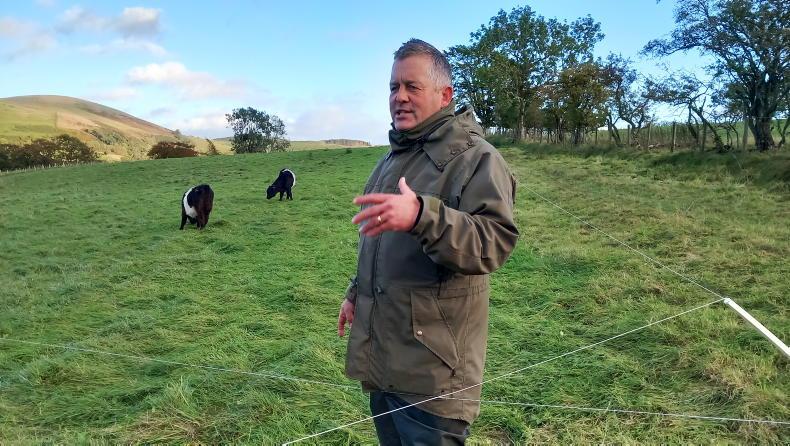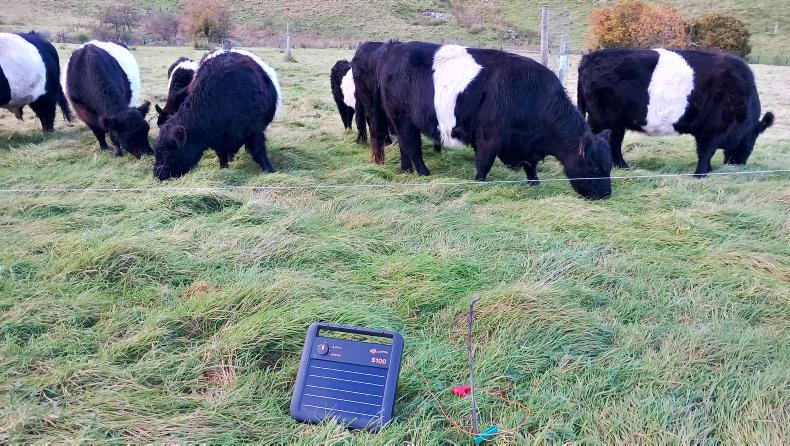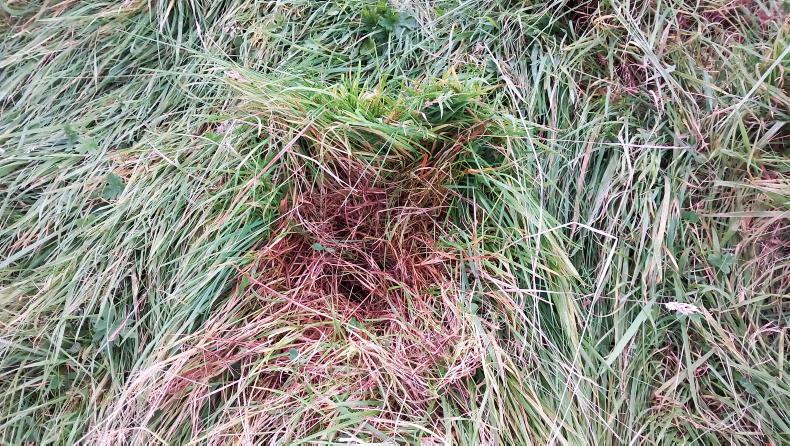English farmer James Rebanks tries not to feed any winter fodder on his upland farm in Cumbria. His aim is to have sheep and cattle grazing on permanent pasture 365 days a year.
As reported last week, James is implementing a system of grassland management that he describes as “long-recovery grazing”.
To me, it seems like paddock grazing on steroids. Instead of letting grass grow for three weeks between grazings, James rests his fields for over 90 days after each three-day grazing event.
The whole idea of the long recovery is to allow the grass plants to grow taller and develop deeper roots.
As a grass plant grows, the surface area of its leaves increases so it can absorb more light from the sun, which allows it to grow faster.
This explains the old saying “it takes grass to grow grass” and it is evident in silage fields where the real burst of growth comes within the final two weeks before mowing.
There is even more going on below the ground. By encouraging deeper roots, the grass plant can absorb more nutrients and minerals from the soil.

English farmer and author James Rebanks.
Caroline Grindrod, a regenerative grazing consultant, explained that the grass plant also feeds the soil biology by absorbing carbon from the atmosphere and releasing it into the soil.
She described this is as a “symbiotic process” where the grass plant and soil biology interact in a mutually beneficial way.
No fertiliser
There is no chemical fertiliser applied on the Rebanks farm and the aim is to grow a diverse sward of natural grasses, as well as other plants such as legumes and wildflowers.
Caroline said nitrogen fertiliser disrupts natural biological processes within the soil and suggested grass plants effectively become “lazy” if a large proportion of their nutrients comes from a bag.
She explained that a lack of chemical fertiliser encourages grass plants to develop deeper roots and it also promotes diversity in the sward.

Cattle are moved in 12-hour breaks over the winter.
This is important for long-recovery grazing, as a wide range of grass varieties means not all plants will go to seed at the same time. It also allows more diversity within the root system, as different plants establish roots at different depths.
A dense, deep network of roots is beneficial for the biology and structure of the soil. In particular, deep roots improve the movement of air and water, which helps prevent soils from becoming too wet and too dry.
When I visited the Rebanks farm in mid-October, there had been heavy rainfall the previous night, but there was no sign of waterlogged soils or poaching where cattle were grazing.
Leftover grass
Aside from the long recovery between grazings, the other fundamental difference between conventional grazing and James’s system is the amount of grass that is left after a grazing event.
James aims to graze around half of the available cover, with the rest trampled by the stock. This requires a major mindset change, as most of us want stock to utilise as much grass as possible.
Caroline said that a grass plant will start to shed its roots if it is continuously grazed down tight, so leaving high residual covers helps maintain the deep, dense network of roots in the soil. Some of the leftover grass will also die off and decay, which helps build organic matter in the soil.

A thick mat of natural grass has been stock piled for the winter.
The grass swards in every field we walked were incredibly dense and roots were into the depth of a spade in some soil pits that we dug. To me, the covers seemed to be like the natural grasses that grow along road verges, but is there any feeding value in it for livestock?
Caroline acknowledged that a laboratory analysis of a single grass plant might show poor results for certain indictors, but she maintained that the overall sward was nutritionally dense.
She said livestock will eat what they need and regular moves means they are getting fresh grass every few days, so they will graze off the leafy bits first.
She suggested that nutritional diversity is missing in conventional ryegrass-based swards and gave the example of stock nibbling leaves from hedges and trees when there appears to be plenty of grass in the field.
Out-wintering cattle on permanent pasture
James has a small herd of Belted Galloway cows and says having the right type of animal is essential for out-wintering on grassland.
He acknowledged that larger, continental-type cattle would not be suitable for grazing the heavy cover of natural grass or standing out in inclement weather conditions at 1,500ft above sea level.
His Beltie cows are lighter on the ground, which avoids poaching, and the thick mat of natural grass, as well as the deep root network and excellent soil structure, prevents the soil surface from being broken by cattle.
James strip grazes his cows with an electric fence in 12-hour breaks. Interestingly, he is not overly concerned about back fencing, which shows how there is little risk of poaching.
He starts stockpiling grass for out-wintering 75 days before the growing season ends, which takes him to around 27 July.
Before that, he left even higher residual covers than usual on this ground after earlier grazings to help develop a thick mat of grass. He has 26ac set aside for his cows and calves this winter.
But does the heavy cover not die back and decay, especially when cold weather starts? James admits this did happen for the first few years and he had to start feeding hay mid-winter. But over time, the grasses that started to grow became better at standing up over the winter. He said he had to feed very little hay last winter and is hoping to feed none this year.
Caroline said these natural grasses develop “stronger structures” as their roots grow deeper, soil biology improves and the plants tap into a wider range of nutrients and minerals.
Replicating nature
James Rebanks is basing his farming around the principles of regenerative agriculture as he wants to move his land a step closer to its natural state, which was probably a mixture of open woodland and pasture. Back then, mobs of grazing animals, such as deer, elk and bison, would move through the countryside in groups. They would graze an area of pasture and move on to fresh grass. Predators, such as wolves, also had a role by making the grazing animals stay together in groups and keep on the move.
James is trying to imitate parts of this process on his 185ac farm with his 300 pedigree Herdwick ewes and 12 Belted Galloway cows by grazing stock intensively in large groups, with regular moves and long rest periods between grazings.
Read more
Grazing is a crucial part of nature
English farmer James Rebanks tries not to feed any winter fodder on his upland farm in Cumbria. His aim is to have sheep and cattle grazing on permanent pasture 365 days a year.
As reported last week, James is implementing a system of grassland management that he describes as “long-recovery grazing”.
To me, it seems like paddock grazing on steroids. Instead of letting grass grow for three weeks between grazings, James rests his fields for over 90 days after each three-day grazing event.
The whole idea of the long recovery is to allow the grass plants to grow taller and develop deeper roots.
As a grass plant grows, the surface area of its leaves increases so it can absorb more light from the sun, which allows it to grow faster.
This explains the old saying “it takes grass to grow grass” and it is evident in silage fields where the real burst of growth comes within the final two weeks before mowing.
There is even more going on below the ground. By encouraging deeper roots, the grass plant can absorb more nutrients and minerals from the soil.

English farmer and author James Rebanks.
Caroline Grindrod, a regenerative grazing consultant, explained that the grass plant also feeds the soil biology by absorbing carbon from the atmosphere and releasing it into the soil.
She described this is as a “symbiotic process” where the grass plant and soil biology interact in a mutually beneficial way.
No fertiliser
There is no chemical fertiliser applied on the Rebanks farm and the aim is to grow a diverse sward of natural grasses, as well as other plants such as legumes and wildflowers.
Caroline said nitrogen fertiliser disrupts natural biological processes within the soil and suggested grass plants effectively become “lazy” if a large proportion of their nutrients comes from a bag.
She explained that a lack of chemical fertiliser encourages grass plants to develop deeper roots and it also promotes diversity in the sward.

Cattle are moved in 12-hour breaks over the winter.
This is important for long-recovery grazing, as a wide range of grass varieties means not all plants will go to seed at the same time. It also allows more diversity within the root system, as different plants establish roots at different depths.
A dense, deep network of roots is beneficial for the biology and structure of the soil. In particular, deep roots improve the movement of air and water, which helps prevent soils from becoming too wet and too dry.
When I visited the Rebanks farm in mid-October, there had been heavy rainfall the previous night, but there was no sign of waterlogged soils or poaching where cattle were grazing.
Leftover grass
Aside from the long recovery between grazings, the other fundamental difference between conventional grazing and James’s system is the amount of grass that is left after a grazing event.
James aims to graze around half of the available cover, with the rest trampled by the stock. This requires a major mindset change, as most of us want stock to utilise as much grass as possible.
Caroline said that a grass plant will start to shed its roots if it is continuously grazed down tight, so leaving high residual covers helps maintain the deep, dense network of roots in the soil. Some of the leftover grass will also die off and decay, which helps build organic matter in the soil.

A thick mat of natural grass has been stock piled for the winter.
The grass swards in every field we walked were incredibly dense and roots were into the depth of a spade in some soil pits that we dug. To me, the covers seemed to be like the natural grasses that grow along road verges, but is there any feeding value in it for livestock?
Caroline acknowledged that a laboratory analysis of a single grass plant might show poor results for certain indictors, but she maintained that the overall sward was nutritionally dense.
She said livestock will eat what they need and regular moves means they are getting fresh grass every few days, so they will graze off the leafy bits first.
She suggested that nutritional diversity is missing in conventional ryegrass-based swards and gave the example of stock nibbling leaves from hedges and trees when there appears to be plenty of grass in the field.
Out-wintering cattle on permanent pasture
James has a small herd of Belted Galloway cows and says having the right type of animal is essential for out-wintering on grassland.
He acknowledged that larger, continental-type cattle would not be suitable for grazing the heavy cover of natural grass or standing out in inclement weather conditions at 1,500ft above sea level.
His Beltie cows are lighter on the ground, which avoids poaching, and the thick mat of natural grass, as well as the deep root network and excellent soil structure, prevents the soil surface from being broken by cattle.
James strip grazes his cows with an electric fence in 12-hour breaks. Interestingly, he is not overly concerned about back fencing, which shows how there is little risk of poaching.
He starts stockpiling grass for out-wintering 75 days before the growing season ends, which takes him to around 27 July.
Before that, he left even higher residual covers than usual on this ground after earlier grazings to help develop a thick mat of grass. He has 26ac set aside for his cows and calves this winter.
But does the heavy cover not die back and decay, especially when cold weather starts? James admits this did happen for the first few years and he had to start feeding hay mid-winter. But over time, the grasses that started to grow became better at standing up over the winter. He said he had to feed very little hay last winter and is hoping to feed none this year.
Caroline said these natural grasses develop “stronger structures” as their roots grow deeper, soil biology improves and the plants tap into a wider range of nutrients and minerals.
Replicating nature
James Rebanks is basing his farming around the principles of regenerative agriculture as he wants to move his land a step closer to its natural state, which was probably a mixture of open woodland and pasture. Back then, mobs of grazing animals, such as deer, elk and bison, would move through the countryside in groups. They would graze an area of pasture and move on to fresh grass. Predators, such as wolves, also had a role by making the grazing animals stay together in groups and keep on the move.
James is trying to imitate parts of this process on his 185ac farm with his 300 pedigree Herdwick ewes and 12 Belted Galloway cows by grazing stock intensively in large groups, with regular moves and long rest periods between grazings.
Read more
Grazing is a crucial part of nature









 This is a subscriber-only article
This is a subscriber-only article












SHARING OPTIONS: